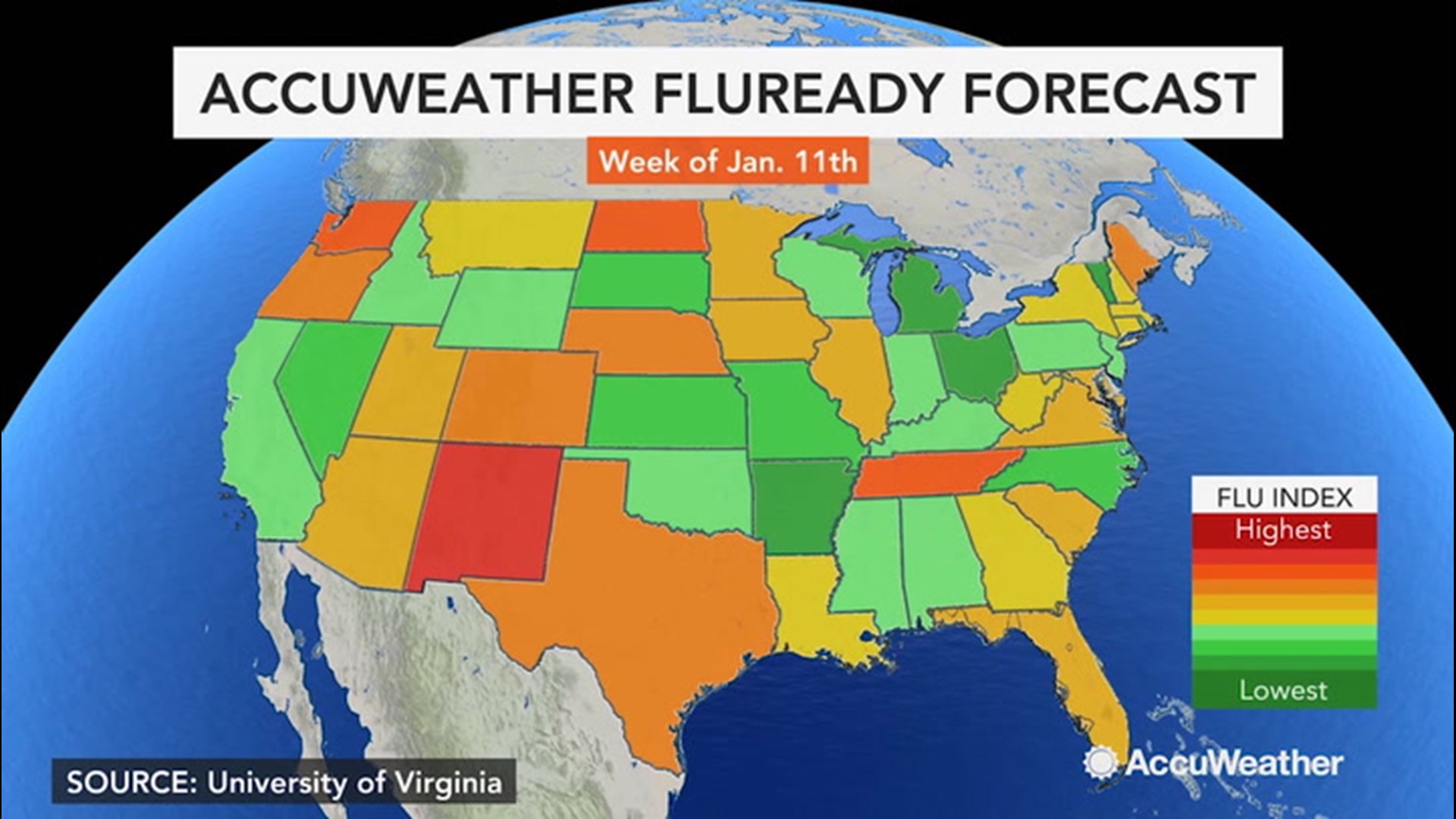This year's flu season in the United States is definitely not one size fits all. While the entire country is "experiencing active transmission" of the flu - with many states at record high levels, according to flu experts - the strain of the flu and the forecast for what's ahead vary by region and even by state.
Some 18 states are at the highest level in the last decade for a comparable week historically, including geographically disparate states like New York, North Dakota, Georgia and Alaska.
"Increases in influenza activity were mainly experienced by states in the North where the infections have been more predominated by one type and are now in the midst of shifting toward the other - mostly Influenza B," Dr. Bryan Lewis, a professor at the Biocomplexity Institute at the University of Virginia, told AccuWeather. Lewis works with a team in a research partnership with AccuWeather.
Overall, however, after weeks of increasing flu activity, most states experienced a dip in activity as reflected in the most recent report from the Centers for Disease Control and Prevention (CDC).
Visits to health care providers for influenza-like illnesses (ILI) decreased from 7 percent last week to 5.8 percent this week, ending three straight weeks of increasing visits. While flu activity remains high - and above the national baseline of 2.4 percent - CDC indicators that track severity (hospitalizations and death) are not high at this point in the season, the CDC notes.
The lack of high severity is likely due to the predominance of Influenza B/Victoria and Influenza A(H1N1), which are more likely to affect children and younger adults than the elderly and subsequently result in fewer hospitalizations and deaths, according to the CDC.
The CDC estimates that so far this season there have been at least 9.7 million flu illnesses, 87,000 hospitalizations and 4,800 deaths from the flu in the U.S. It's the eighth straight week flu activity is above baseline normal; last year, levels of ILI in the U.S. were at or above baseline for 21 straight weeks.
"Influenza A and B remain very active throughout the nation," Lewis told AccuWeather, "and states that have experienced a strong peak from only one can expect a second surge in activity that may lead to a second peak."
However, Lewis and his team note that some states may be entering the final weeks of active transmission, having already experienced both A and B waves with now declining activity. Those areas include states centered from Texas to North Carolina.
Flu season typically begins in October, peaks between December and February and lasts well into March although activity can last as late as May.

